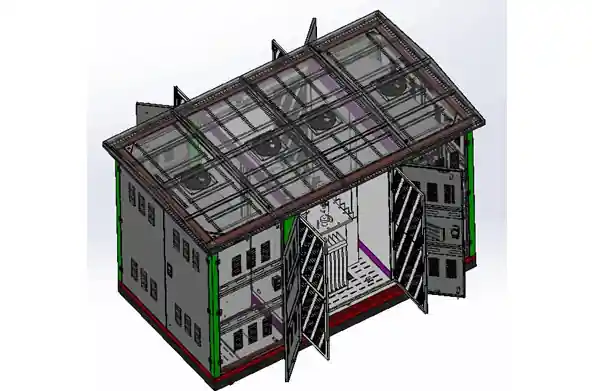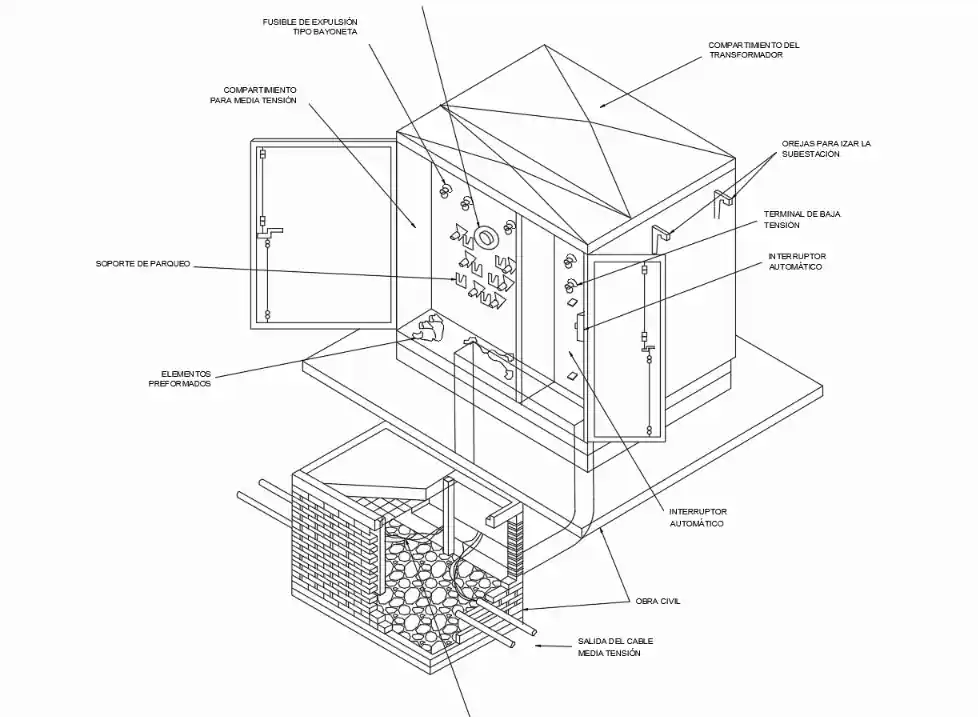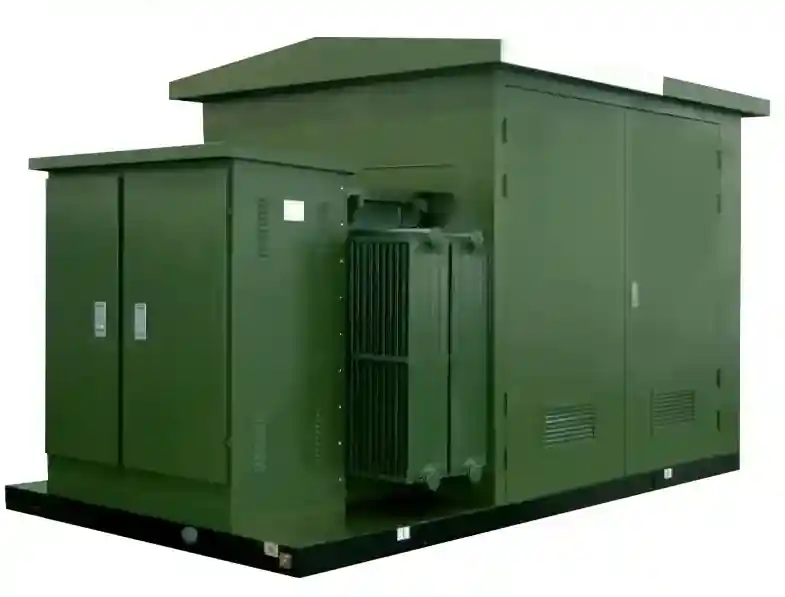
Основна концепція: Що таке компактна підстанція?
A компактна підстанція поєднує розподільчий пристрій середньої напруги, трансформатор і низьковольтний розподільчий пристрій в одному закритому блоці. Його основна функція - знижувати середню напругу (зазвичай 11 кВ, 22 кВ або 33 кВ) до придатної для кінцевого споживача низької напруги (зазвичай 400 В).
Компактні підстанції зібрані на заводі, протестовані та готові до швидкого розгортання, що робить їх ідеальними для міського, промислового та відновлюваної енергетики.
За даними ВікіпедіяЦі підстанції необхідні там, де простір, безпека та естетика мають вирішальне значення.
Типові номінали компактних підстанцій
| Параметр | Типовий діапазон |
|---|---|
| Номінальна напруга (сторона ВН) | 3,3 кВ, 6,6 кВ, 11 кВ, 22 кВ, 33 кВ |
| Номінальна напруга (сторона низької напруги) | 400В, 690В |
| Номінальна потужність | від 100 кВА до 3150 кВА |
| Частота | 50 Гц / 60 Гц |
| Струм витримки при короткому замиканні | До 31,5 кА (сторона ВН) |
| Клас захисту | IP23 до IP54 |
| Спосіб охолодження | ONAN (Oil Natural Air Natural) для трансформаторів |

Сфери застосування
- Міська житлова забудова: Розподіл низьковольтної енергії в квартирах і комерційних комплексах.
- Індустріальні парки: Живлення важких машин, систем опалення, вентиляції та кондиціонування повітря і виробничих ліній.
- Станції відновлюваної енергетики: Використовується на вітроелектростанціях і сонячних електростанціях для з'єднання виробництва електроенергії з розподільчими мережами.
- Центри обробки даних: Забезпечення безпечного та безперебійного перетворення середньої та низької напруги.
- Транспортні системи: Залізничні підстанції та об'єкти аеропортів.
Доповідь від Спектр IEEE підкреслює зростаючий попит на компактні підстанції в розподіленій генерації та міських електромережах.
Ринкові тенденції та технологічні розробки
- Модуляризація: Такі виробники, як ABB, Siemensі Schneider Electric тепер пропонують високомодульні конструкції для швидшої кастомізації.
- Екологічно чисті матеріали: Впровадження біорозкладних трансформаторних масел і матеріалів для корпусів, придатних для вторинної переробки.
- Розумний моніторинг: Інтеграція систем SCADA та датчиків IoT для відстеження продуктивності в режимі реального часу.
- Вищі рейтинги IP: Покращений захист від пилу та води для зовнішніх установок або установок у важких умовах.
Пояснення технічних параметрів
Номінальна потужність: Відноситься до максимального безперервного навантаження, яке підстанція може витримати без перегріву. Найпоширеніші одиниці варіюються від 100 кВА для невеликих систем до 3150 кВА для великих промислових або комунальних установок.
Номінальна напруга: Визначає вхідний (середня напруга) і вихідний (низька напруга) рівні. Правильне узгодження напруги має вирішальне значення для стабільності системи.
Струм витримки короткого замикання: Вказує на здатність витримувати раптові високострумові пошкодження без катастрофічного виходу з ладу.

Відмінності від традиційних підстанцій
| Аспект | Традиційна підстанція | Компактна підстанція |
| Час встановлення | Кілька місяців | Кілька тижнів |
| Вимоги до площі | Високий | Мінімальний |
| Вартість | Вищі початкові витрати | Нижчі загальні витрати для середніх потреб |
| Налаштування | Високий | Доступні модульні варіанти |
| Мобільність | Важко | Відносно легко |
Компактні підстанції заповнюють прогалину між гнучкістю і продуктивністю, особливо там, де простір обмежений або потрібне швидке розгортання.
Поради щодо купівлі та рекомендації щодо вибору
- Визначте вимоги до навантаження: Ретельно оцініть поточні та майбутні профілі навантаження.
- Враховуйте умови навколишнього середовища: Обирайте відповідні ступені захисту IP для зовнішнього, прибережного або промислового використання.
- Оцініть тип трансформатора: Занурені в масло або сухі, залежно від пожежонебезпеки та можливостей обслуговування.
- План розширення: Обирайте агрегати з можливістю збільшення навантаження або паралельної роботи.
- Перевірте сертифікати: Зверніть увагу на відповідність стандартам IEC 62271-202, IEEE C37.20.2 або еквівалентним стандартам.
Консультації з досвідченими виробниками або EPC-компаніями гарантують оптимальні рішення, адаптовані до вимог конкретного проекту.
Часті запитання (FAQ)
A1: Кіоскова підстанція зазвичай відноситься до компактних підстанцій зі специфічною конструкцією корпусу, часто менших розмірів і призначених для міських мереж. Функціонально вони схожі, але відрізняються структурою та розмірами.
A2: Так. Вони ідеально підходять для сонячних електростанцій, вітрових парків та мікромереж завдяки своїй модульності, швидкому розгортанню та сумісності з децентралізованими джерелами енергії.
A3: При належному технічному обслуговуванні компактна підстанція може надійно працювати протягом 25-40 років, залежно від умов навколишнього середовища та факторів навантаження.
Таким чином, компактні підстанції мають вирішальне значення для забезпечення надійного, ефективного та гнучкого розподілу електроенергії. Розуміння їхніх характеристик забезпечує оптимальне проектування та реалізацію широкого спектру сучасних інфраструктурних проектів.


